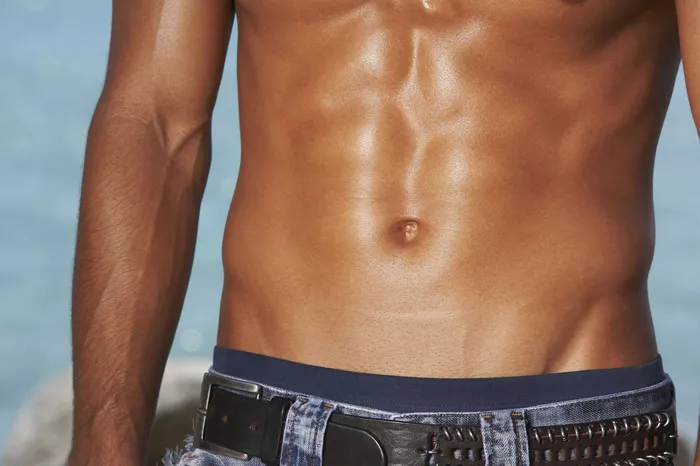chieving visible six-pack abs requires more than just hitting the gym; it demands consistent training combined with precise nutrition. Reducing body fat to the level where your abdominal muscles become visible takes time, often months or even years, depending on your starting point.
It’s important to remember that spot-reducing fat is a myth—you cannot choose where your body loses fat. No amount of exercise will outpace an unbalanced diet filled with takeaways, sugary snacks, and post-workout drinks. Consistency is key.
Louis Rennocks, cofounder of the boxing studio Boxx and a weight loss coach, stresses, “Dropping body fat is a marathon, not a sprint. Setting small, achievable goals and maintaining discipline is essential for long-term success.” He recommends aiming for a weight loss of 1 to 2 pounds per week and gradually increasing daily activity levels, such as walking more and intensifying workouts.
What Do Different Body Fat Percentages Look Like?
Here’s a breakdown of common body fat percentages for men and what to expect visually and health-wise at each level:
30% Body Fat: Considered obese for men aged 20 to 39 (threshold is 25%). At this level, no six-pack abs will be visible. This body fat percentage is linked with increased risks of heart disease and other cardiovascular issues.
25% Body Fat: Still carries significant fat covering muscles, but some muscle mass may be present. The physique typically appears overweight, and abs are not visible.
20% Body Fat: Often described as “skinny fat,” where there is less muscle definition and some softness remains. However, this level is generally healthy and helps reduce the risk of diseases linked to excess fat.
15% Body Fat: Muscles start to show definition. Vascularity (visible veins) begins in areas like the arms and shoulders. This is a good starting point on the path to visible abs.
10% Body Fat: At this level, six-pack abs are clearly visible without appearing overly shredded. Veins may be visible, but the body still maintains healthy fat levels necessary for normal bodily functions.
8% Body Fat or Lower: Single-digit body fat is typically achieved by competitive athletes, fitness models, or actors preparing for specific roles. This level is not sustainable for most people due to risks like muscle loss, organ damage, dehydration, and fragile bones. Extreme caution and professional supervision are advised.
How to Measure Your Body Fat Percentage
Tracking your body fat percentage is important, though no method is perfect. The goal is to observe trends rather than obsess over exact numbers. Common methods include:
Body Fat Calipers: Measure fat thickness at several body points. Accessible but subject to human error.
Bioelectrical Impedance Analysis: Sends a mild electrical current through the body to estimate fat. Convenient but cannot specify fat location.
Body Circumference Measurements: Uses formulas incorporating waist, neck, and height measurements. Used by military and fitness professionals.
Hydrostatic Weighing: Measures body density underwater. Accurate but less accessible.
The Bod Pod: Uses air displacement to measure body composition. Highly precise but costly.
Each method has advantages and disadvantages; choosing one depends on your needs, budget, and access to equipment.
Practical Tips for Lowering Body Fat and Revealing Abs
Nutrition first: Control calorie intake with a balanced diet rich in whole foods, lean proteins, and plenty of vegetables.
Increase activity: Incorporate both strength training and cardiovascular exercise. Even simple changes like more walking can help.
Consistency: Aim for gradual progress to avoid burnout and maintain muscle mass.
Set realistic goals: Focus on health improvements as much as aesthetics.
Get professional advice: If targeting very low body fat, especially below 10%, consult fitness and medical professionals.
Visible abs are a sign of overall body fat reduction and muscle preservation. With patience and discipline, you can improve your body composition and enjoy the health benefits that come with it.
If you’re ready to move beyond jokes about the only six-pack in your fridge, start with small, steady steps toward lowering your body fat percentage—and enjoy the journey to a healthier, fitter you.
Related topics:
- How Many Push-Ups Do You Need to Build Muscle?
- 7 Best Muscle Building Supplements For Older Males
- Best 10 Supplements for Muscle Growth


